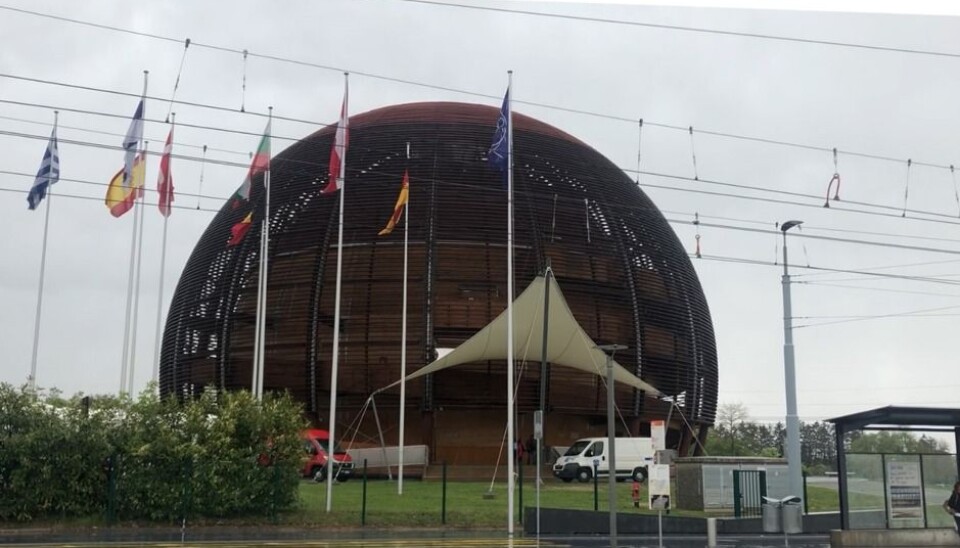This article is produced and financed by NTNU Norwegian University of Science and Technology - read more

NTNU cools down CERN
CERN’s two Large Hadron Colliders detectors to get a climate-friendly cooling system upgrade.
The Large Hadron Collider (LHC) is a 27 km-long large particle accelerator that was built underground at CERN in Geneva, Switzerland. The LHC and its different detectors have been constructed to help scientists learn more about the early universe and fill in missing information in the standard model of particle physics.
Now, a new four-year project called CoolCERN will help make the collider more climate friendly by changing the way two of the collider’s four detectors, named ATLAS and CMS, are cooled.
Not much different than frozen fish
ATLAS and CMS have been used in many different physics experiments, including the search for the Higgs boson and the study of particles that can constitute dark matter.
The detectors contain silicon cells that have to be kept cold to minimize the radiation damage from the particles travelling through (particle flux.) Typically, the sensors need to be kept below -40°C, which means the cooling pipes have to be kept as -50°C or lower.
“You can compare these very sensitive detectors to frozen fish,” says NTNU Professor Armin Hafner, who is head of the CoolCERN project at the university. “They have to be cool at all times, and they should never get warm.”
The detectors may be similar to frozen fish in their cooling needs, but they are quite a bit more costly — more than 1 billion NOK in total. That makes it critical that the cooling system be very stable and reliable so each detector can operate continuously without interruption.
Environmentally friendly cooling and international requirements
Most of the current refrigeration systems used by CERN contain synthetic refrigerants, with high global warming (GWP) potential, and will soon be phased out to comply with international regulations. CoolCERN will develop a cooling system that relies on a natural refrigerant, CO2 (also known as R-744 in refrigeration). CO2 has no ozone depletion potential (ODP), negligible GWP, and is non-toxic and non-flammable.
“NTNU has been contacted by CERN because of our reputation, know-how and expertise on CO2 refrigeration. NTNU and SINTEF have been conducting research on CO2 vapour compression systems for more than 30 years,” Hafner says.
That means a CO2-based system will make the detectors compliant with the European scheme for fluorinated greenhouse gases, the Paris Agreement on the reduction of greenhouse gas emissions and the Kigali Agreement on the reduction of the use of HFC greenhouse gases.

Cooling 100 metres below ground
When the particles in the CERN experiments collide, the detectors need to absorb all the released energy to keep things cool enough. The cooling capacities required for this are huge. In the case of the ATLAS detector, you can compare the cooling capacities required to the fridges of 1500 typical households combined. In the case of the CMS detector: the fridges of 3000 households. Furthermore, a freezing temperature of about -50 °C is needed, which is close to the point of where CO2 could evaporate (-56,6 °C is the evaporation temperature). These challenges would be hard enough up on the ground.
“Another challenge we will be facing is the height difference,” says Ángel Álvarez Pardiñas, an NTNU postdoc who is working on the project. “The cooling units are on surface, but we will be cooling detectors that are 100 metres underground.”
As a first step to test the concepts, a smaller scale refrigeration system will be installed and tested. The smaller scale refrigeration system can be compared to fridges of about 250 households. Afterwards, the researchers will study a system that has the full-scale height difference. The results of these first steps will be vital in designing the size and configuration of the actual CMS and ATLAS CO2 refrigeration systems.
Potential for Norwegian business and industry
If all goes according to plan, Norwegian technology will be part of CERN’s new cooling system. The initial plan is that a Norwegian company will build the different CO2 refrigeration systems used during the project, after which they will be shipped for installation at CERN.
Professor Armin Hafner is the CoolCERN project manager. Ángel Álvarez Pardiñas,a postdoc at NTNU, and Stefanie Blust, a PhD candidate, will also be involved in CoolCERN. You can read more about the project at https://www.ntnu.edu/ept/coolcern/


































